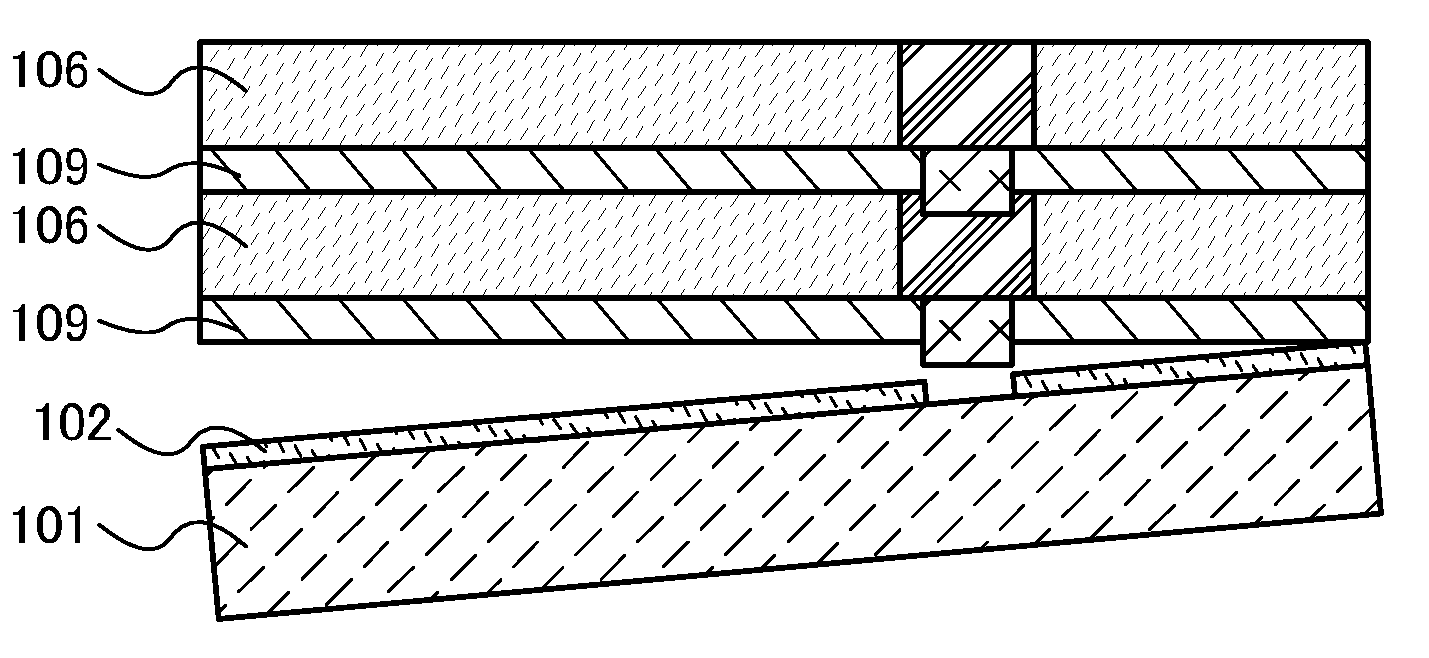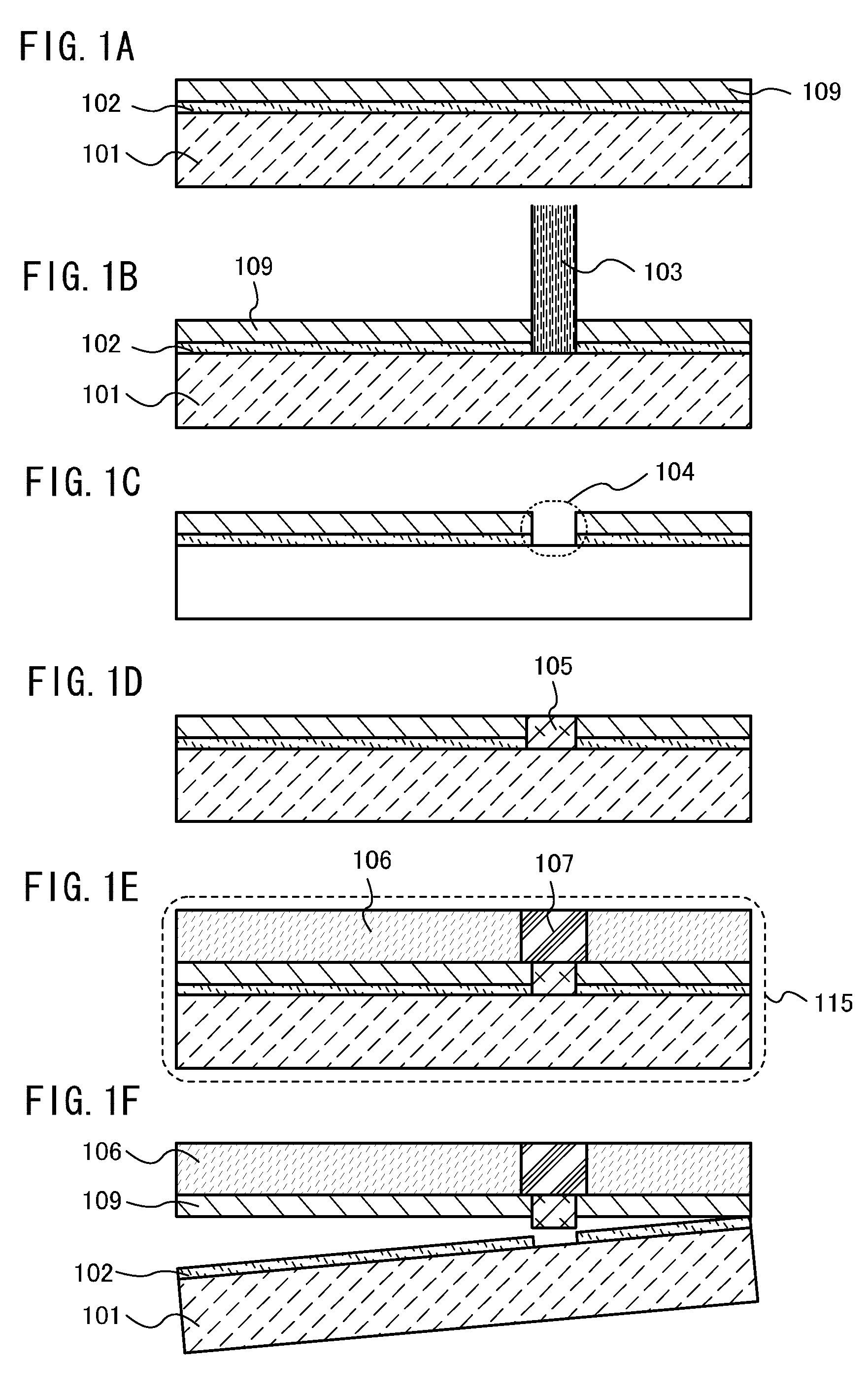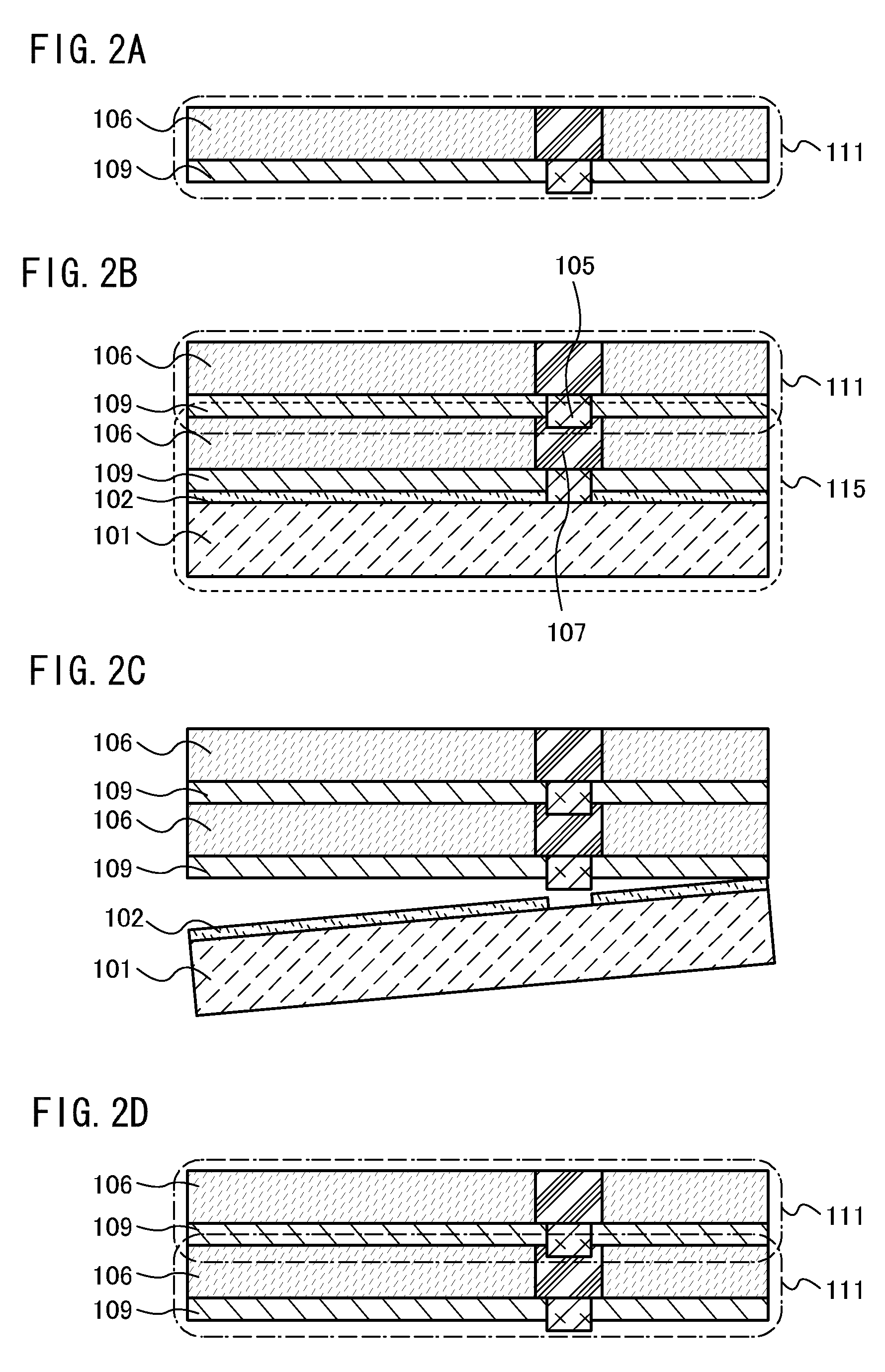Method for manufacturing semiconductor device
a semiconductor and integrated circuit technology, applied in the field of semiconductor devices, can solve the problems of low resistance to external stress in the integrated circuit of the semiconductor that is reduced in size and thickness, and achieve the effect of less connection failure and high resistance to external stress
- Summary
- Abstract
- Description
- Claims
- Application Information
AI Technical Summary
Benefits of technology
Problems solved by technology
Method used
Image
Examples
embodiment 1
[0041]This embodiment will be described with reference to FIGS. 1A to 1F, FIGS. 2A to 2D, FIGS. 3A to 3E, FIGS. 4A to 4D, FIGS. 5A to 5D, FIGS. 6A to 6C, FIGS. 7A to 7C, FIGS. 8A and 8B, FIG. 9, FIG. 10, and FIGS. 11A and 11B.
[0042]First, a basic manufacturing process of this embodiment will be described with reference to FIGS. 1A to 1F and FIGS. 2A to 2D. After a separation layer 102 is formed over a substrate 101, a semiconductor element layer 109 is formed over the separation layer 102 (see FIG. 1A).
[0043]Then, a laser beam 103 is emitted from above the semiconductor element layer 109 (see FIG. 1B), whereby a part of the semiconductor element layer 109 and a part of the separation layer 102 are removed to form an opening 104 (see FIG. 1C).
[0044]After that, a wiring 105 is formed in the opening 104 to be electrically connected to the semiconductor element layer 109 (see FIG. 1D).
[0045]Then, a protective material 106 is formed over the semiconductor element layer 109, and an electr...
PUM
 Login to View More
Login to View More Abstract
Description
Claims
Application Information
 Login to View More
Login to View More - R&D
- Intellectual Property
- Life Sciences
- Materials
- Tech Scout
- Unparalleled Data Quality
- Higher Quality Content
- 60% Fewer Hallucinations
Browse by: Latest US Patents, China's latest patents, Technical Efficacy Thesaurus, Application Domain, Technology Topic, Popular Technical Reports.
© 2025 PatSnap. All rights reserved.Legal|Privacy policy|Modern Slavery Act Transparency Statement|Sitemap|About US| Contact US: help@patsnap.com



